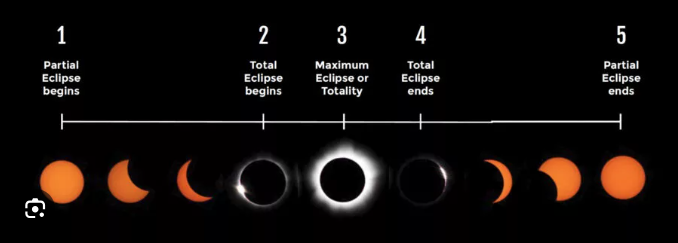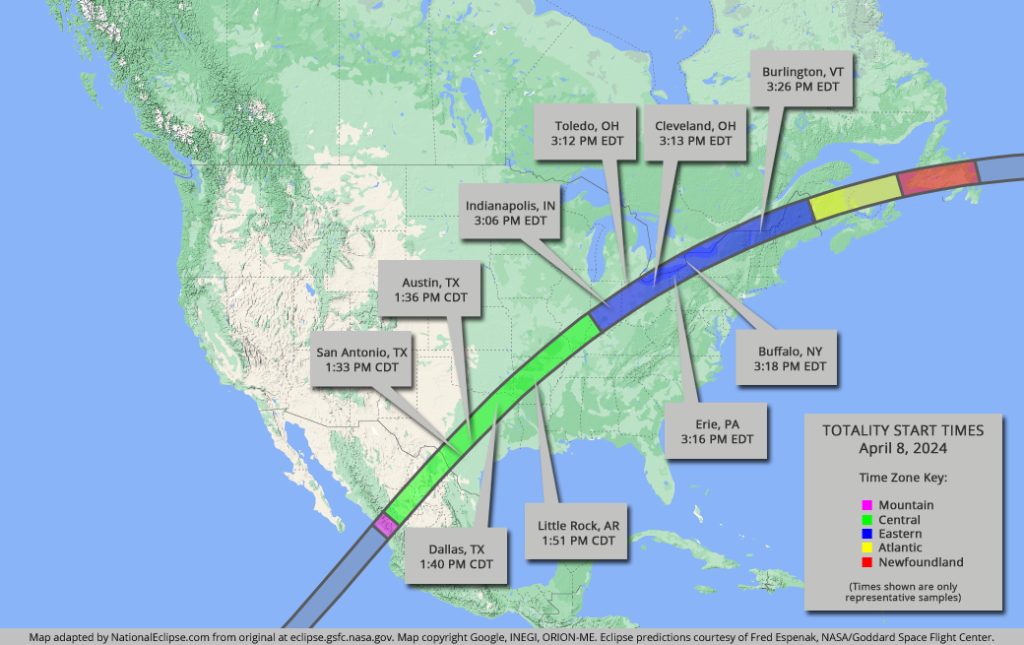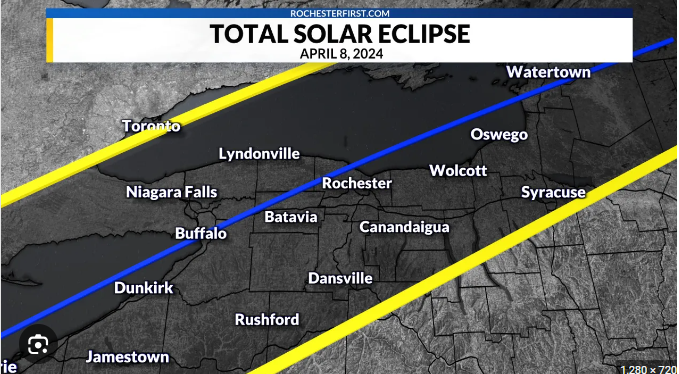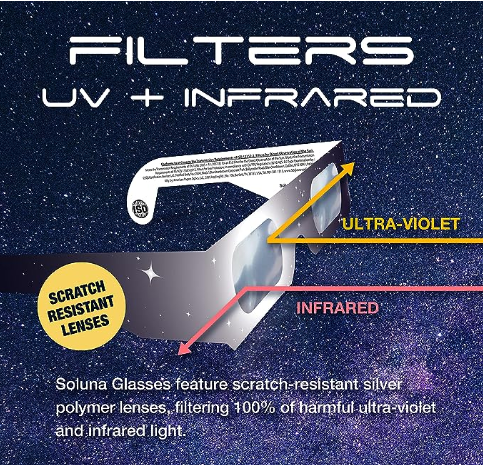WHAT IS SO SPECIAL ABOUT THIS ECLIPSE?
THIS WILL BE THE LAST TOTAL SOLAR ECLIPSE VISIBLE IN THE CONTIGUOUS UNITED STATES UNTIL AUGUST 23, 2044.

WHAT IS A SOLAR ECLIPSE?
A solar eclipse occurs when the Moon passes between Earth and the Sun, thereby obscuring the image of the Sun for a viewer on Earth. A TOTAL solar eclipse will take place at the Moon’s ascending node on Monday, April 8, 2024, visible across North America and dubbed the Great North American Eclipse (also Great American Total Solar Eclipse and Great American Eclipse) by some working media groups. A total solar eclipse occurs when the Moon’s apparent diameter is larger than the Sun’s, blocking all direct sunlight, turning day into darkness. Totality occurs only in a narrow path across Earth’s surface, with the partial solar eclipse visible over a surrounding region thousands of miles wide.
2024 Total Solar Eclipse: Through the Eyes of NASA (Official Trailer)
This Eclipse will last twice as long as in 2017, depending on the observer’s location. It’s also set to be the longest totality on land for over a decade, so expect eclipse-chasers from around the world plan to be located in the path of totality.

Solar eclipses are fairly numerous, about 2 to 4 per year, but the area on the ground covered by totality is only about 50 miles wide. In any given location on Earth, a total eclipse happens only once every hundred years or so, though for selected locations they can occur as little as a few years apart.
BEST PLACE TO WATCH IT FROM
In the United States, totality will be visible through the states of Texas (including parts of San Antonio, Austin, and Fort Worth and all of Arlington, Dallas, Killeen, Temple, Texarkana, Tyler, Sulphur Springs and Waco), Oklahoma, Arkansas (including Morrilton/Petit Jean, Hot Springs, Searcy, Jonesboro, and Little Rock), Missouri, Tennessee (extreme northwestern corner of Lake County), Illinois (including Carbondale, where it intersects the path of the 2017 eclipse), Kentucky, Indiana (including Bloomington, Evansville, Indianapolis, Anderson, Muncie, Terre Haute, and Vincennes), Ohio (including Akron, Dayton, Lima, Roundhead, Toledo, Oak Harbor, Cleveland, Warren, Newton Falls and Austintown), Michigan (extreme southeastern corner of Monroe County), Pennsylvania (including Erie), Upstate New York (including Buffalo, Niagara Falls, Rochester, Syracuse, the Adirondacks, Potsdam, and Plattsburgh), and northern Vermont (including Burlington), New Hampshire, and Maine, with the line of totality going almost directly over the state’s highest point Mount Katahdin.
The largest city entirely in the path will be Dallas, Texas. It will be the second total eclipse visible from the central United States in just 7 years, after the eclipse of August 21, 2017.

SAFETY PRECAUTIONS
Except during the brief total phase of a total solar eclipse, when the Moon completely blocks the Sun’s bright face, it is not safe to look directly at the Sun without specialized eye protection for solar viewing.
WARNING!!!
Viewing any part of the bright Sun through a camera lens, binoculars, or a telescope without a special-purpose solar filter secured over the front of the optics will instantly cause SEVERE EYE INJURY.

WEATHER CONDITIONS
The visibility of the eclipse was subject to weather conditions along the path of totality. Clear skies were essential for observers to witness the phenomenon clearly, so many eclipse enthusiasts carefully selected their viewing locations based on weather forecasts.
There is no better way to watch the Total Solar Eclipse, than from a New RV from Wilkins RV.
Information source: https://science.nasa.gov/eclipses/future-eclipses/eclipse-2024/
